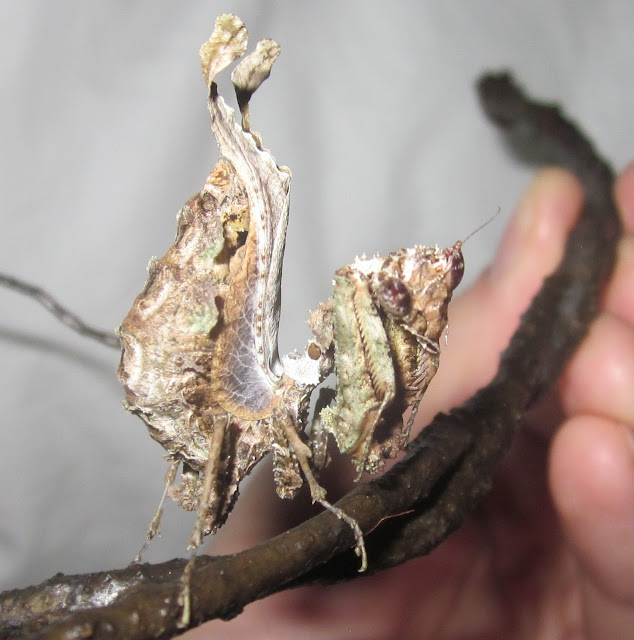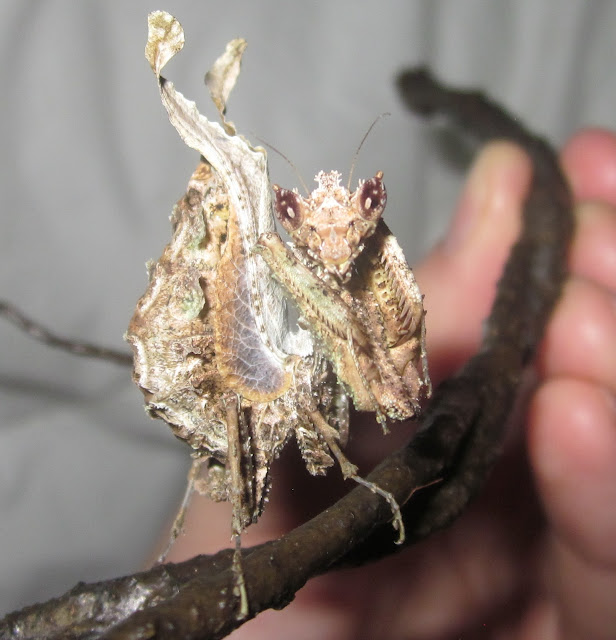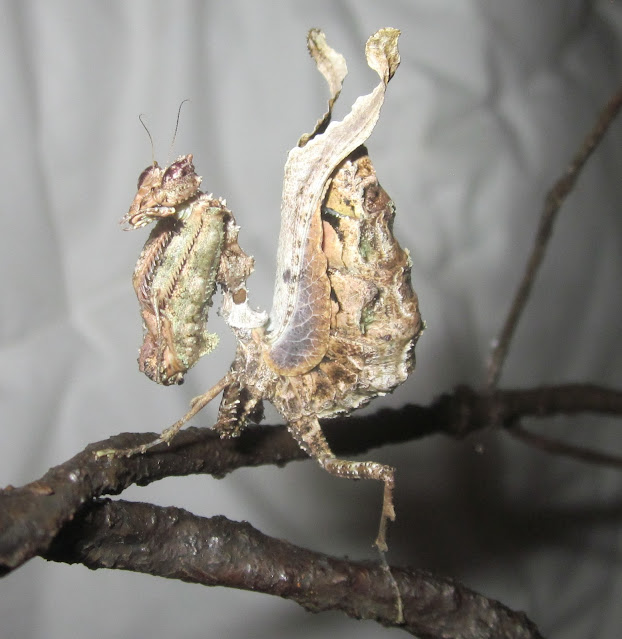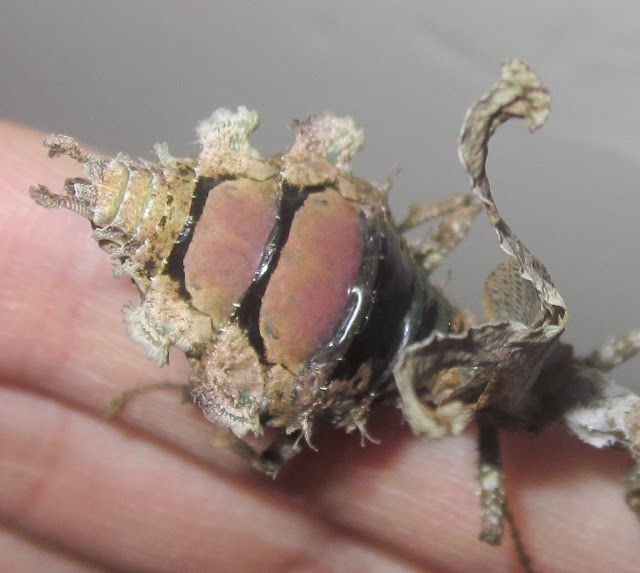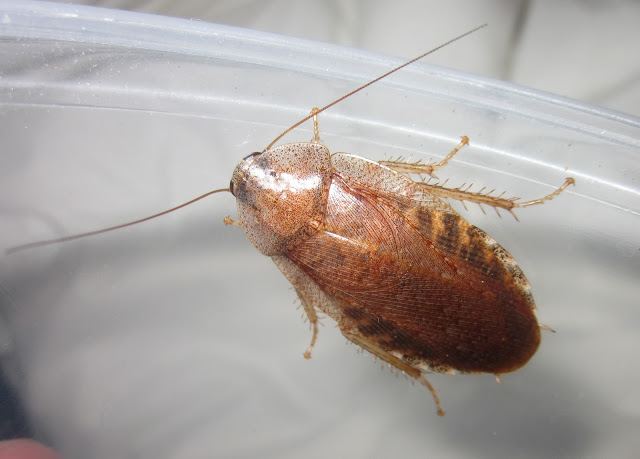If you're wondering why the lack of posts lately, I just moved into a new place at the beginning of this month, so things have been a bit hectic as of late. 😅 Anyways, with a new house comes new opportunities for collecting new species, and this place has a fairly spacious backyard... So for the first time ever, I've made a makeshift aspirator (AKA "Pooter") for collecting microfauna, specifically springtails. 😁
I used a 2 oz deli cup, a plastic straw, some thin fabric to cover the sucking part so I don't inhale dirt and springtails, and of course, hot glue. 😄 It's not the prettiest looking thing, but it definitely works quite well, and I've collected three new springtail species as a result! (as well as some Willowsia buski, which I'll try culturing again away from my Entomobrya unostrigata...).
 |
| My first aspirator |
Now, onto the new springtails I caught! Let's start off with my new Entomobrya sp. "Eagle, ID"! These are about half the size of Entomobrya unostrigata, but are a similar shape, are also very hairy, and seem to prefer similar conditions for breeding.
I've got them in a well ventilated 16 oz deli cup with a thin layer of coconut fiber as the substrate. There are bark chips and cardboard pieces for hides/oviposition sites. I'm keeping one corner of the setup humid, the rest dry. For food I'm offering dog food (and the subsequent food mold), as well as pollen on occasion.
Here are a few photos of one:
Sadly, small, grey Entomobrya like these are difficult to ID down to species without examination under a microscope... So these may remain unidentified past genus for a while.
Thankfully I already found babies in their setup, so it looks like these are well on their way to getting established in culture! 😃
Next up, I found quite a few Entomobrya multifasciata in the yard! These also seem to enjoy a drier microclimate, and we're more abundant than the grey Entomobrya species in the yard. I think these are the most attractive of the Entomobrya I currently culture (and closer in size to E.unostrigata than the grey sp.), I really hope they'll take off for me! 😁
I've got them in a well ventilated 16 oz deli cup with a thin layer of coconut fiber as the substrate. There is moss and cardboard pieces for hides/oviposition sites. I'm keeping one corner of the setup humid, the rest dry. For food I'm offering dog food (and the subsequent food mold), as well as pollen on occasion.
Here are some pics of these minute beauties:
Hopefully I'll see babies in their setup soon!
Lastly, we'll end with the largest (and cutest) species I found in the yard, Isotoma viridis. I've bred this species before back in 2015, but alas, predatory mites decimated their colony back then, and I lost them as a result. This species can be a bit variable in coloration, most of the ones I found were a dark green, but a couple were a relatively bright yellow color.
I've got them in a well ventilated 16 oz deli cup with a thin layer of coconut fiber as the substrate. There is moss and cardboard pieces for hides/oviposition sites. I'm keeping the setup quite humid. For food I'm offering dog food (and the subsequent food mold), as well as pollen on occasion.
Here are some pics of these pudgy little cuties:
 |
| Dark green individual |
 |
| Yellow individual |
Hopefully I'll have better luck with this species this time, and maybe not lose them completely to predatory mites... 🙃 They're pretty large for a springtail, with adults reaching around 4 mms, so I'm surprised they were so negatively affected by predatory mites last time I cultured them.
Big thanks to
Ryne Pavy for identifying all these springtails! If you too are interested in culturing springtails, and partake in this quickly growing sub-hobby, feel free to join the
Springtail Discord Group, or the
Springtail Facebook Group. 😊
Anyways, that's gonna do it for this post, thanks for reading, hope everyone enjoyed, stay safe, and I'll see you all next time! 😉

